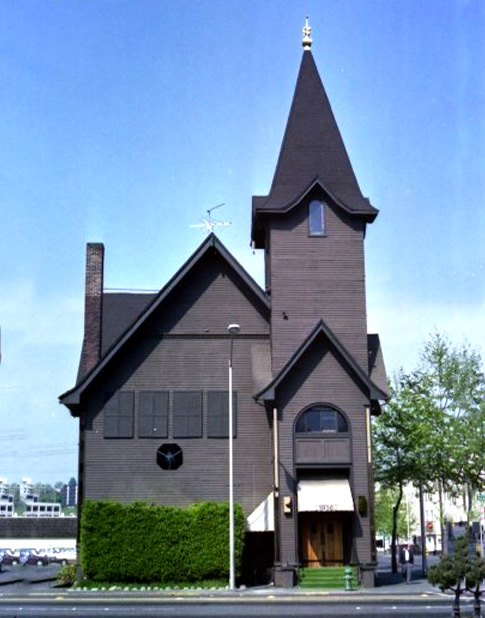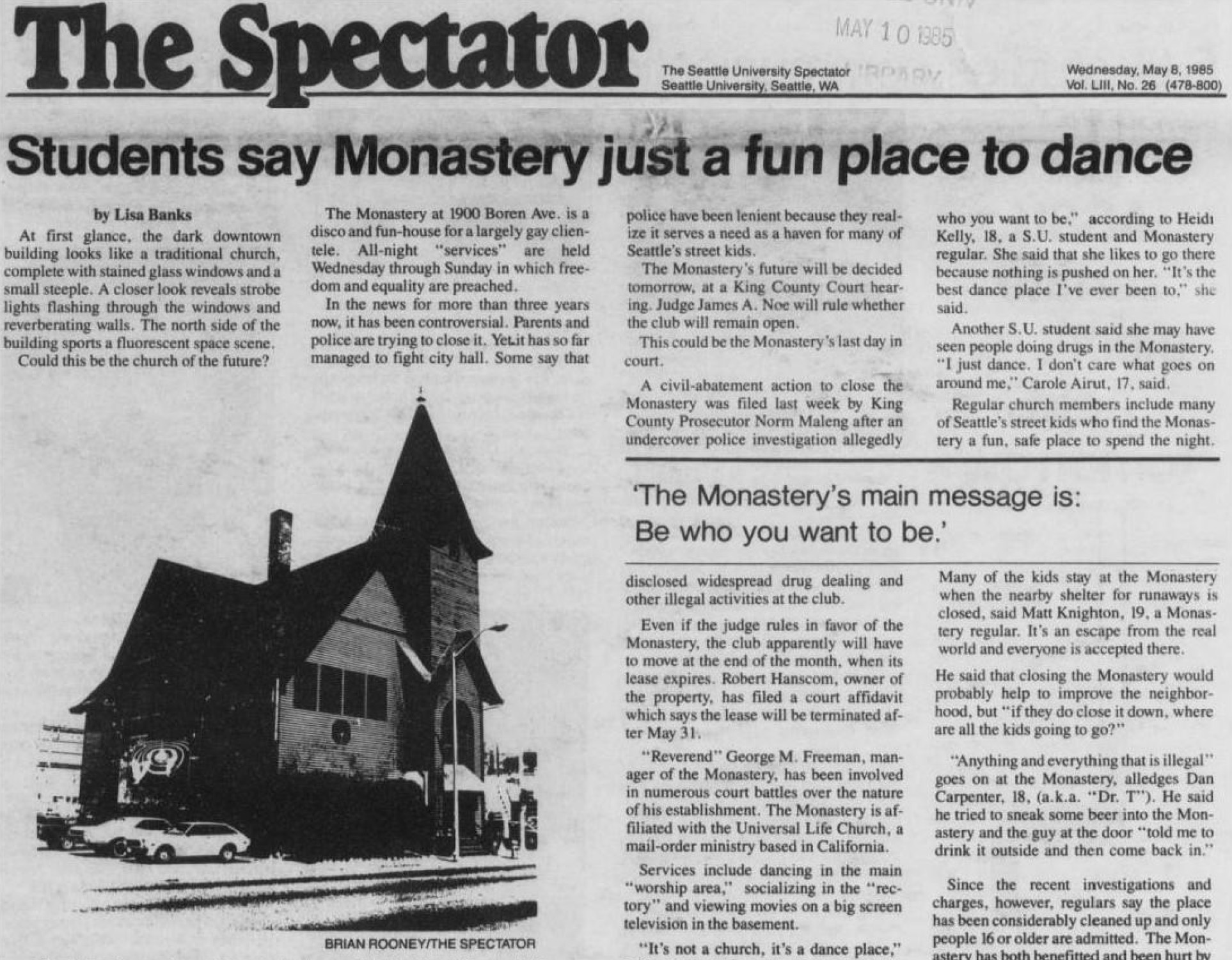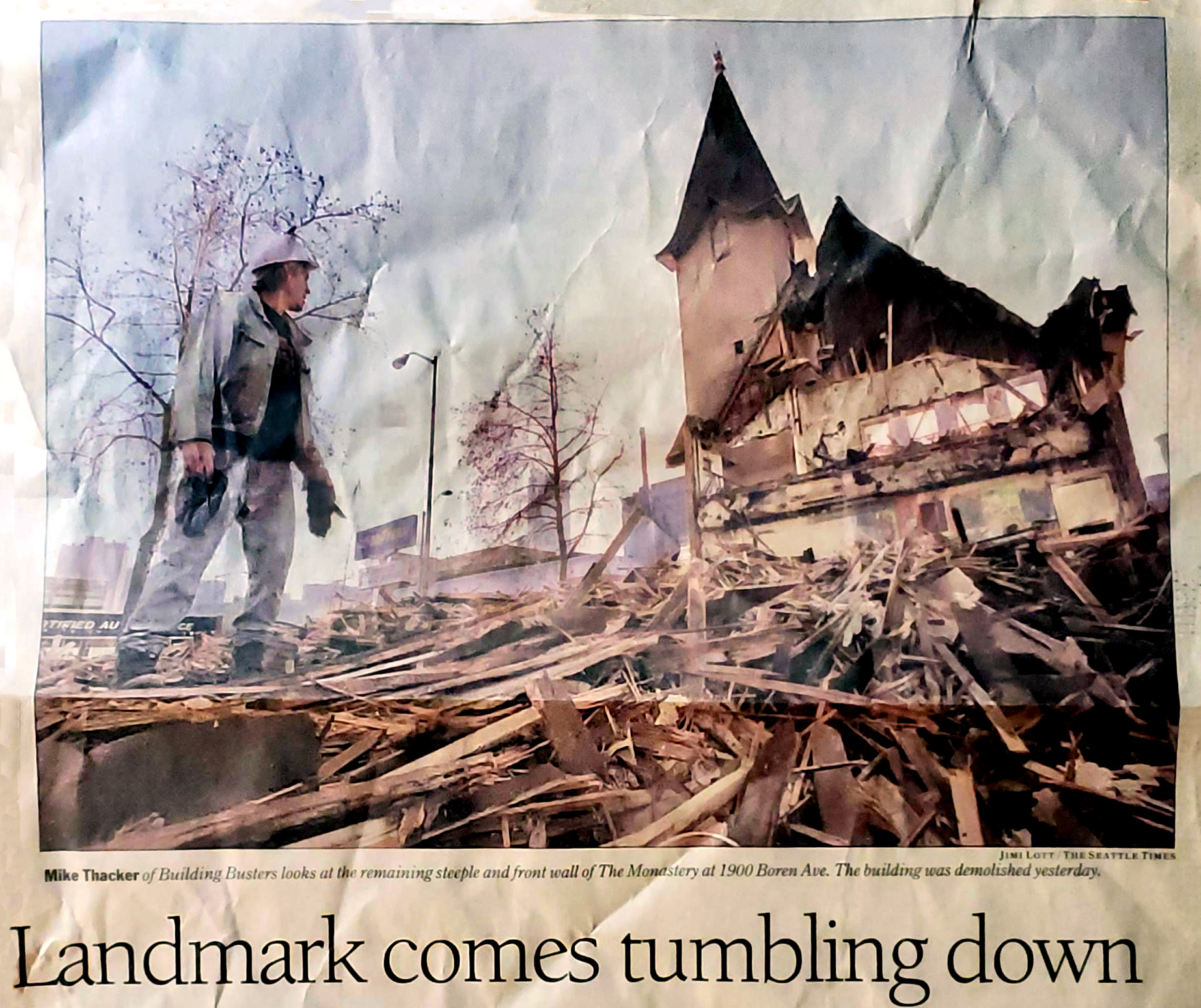
From 1977 through 1984, the Seattle Police department continually led undercover operations to eliminate The Monastery. The Monastery was difficult to understand because it was built in an old 1900’s Methodist Church, which then became a non-alcoholic after-hours rendezvous. George Freeman, its owner, had previously built a night club in New York which was also an after-hours club called Galaxy 21.
In earlier years Seattle’s record show that places, such as The Macombo, The Double Header, The Machine (in Fremont, Seattle) and Shelly’s Leg were under the control and enforcement of the previous Chief of Police who made a side business of having gay owners pay the officers on the local beat payoff to allow men dancing. This went of for a number of years until Seattle had its hearings and investigations and the police department and politicians were exposed and left office.
In 1977 the opening of The Monastery kindled a hostility with a number of Seattle old guard residents who had been raised that “fairies” were a creation of “evil” and an abomination in the eyes of God. And, of course, it was taught just a few years earlier that blacks were descendants of Cain because Cain had killed his good brother, Able. With this backdrop, it is simply easy to understand the behavior of the Police department under the jurisdiction of a Republican prosecutor to go after anyone who catered to gay youth. The age of consent in the State of Washington was 16 in the 1970’s. In addition, in most of the eastern states the drinking age had been 18. With this explanation it gives pause for the behavior of the vice police to eliminate what they saw as a vice.

The Monastery believed that housing at risk youth and letting them live in The Monastery. Using the profits to buy food and pay its overhead The Monastery was more in-line of a Church, for which the building was built. Eventually it became The Monastery, an affiliate of the Universal Life Church. On its own it fed and housed people including Salvadoran refugees and others who found themselves at the doorstep of the Monastery seeking aid. By 1975, up to 15 people were temporarily living in the basement of The Monastery. In return for shelter and food they cleaned, painted and updated the Church. Most of them believed that it was their Church and their home. They ranged from the age of 16 to 60 and included white, black, Asian, Eskimo, male, female, gay and straight. The Monastery at its time was the most integrated institution in Seattle.
 During one of the raids on The Monastery Church members were booked and photographed as a means of publicly humiliating everybody in the building. Unbeknownst to the Seattle Police there were Federal agents, assistant attorney generals of the state of Washington, Ministers, military personnel, professionals and prostitutes who had no place to live while trying to re-enter into society. The only commonality that these members had was that they were in open association with the gay community..
During one of the raids on The Monastery Church members were booked and photographed as a means of publicly humiliating everybody in the building. Unbeknownst to the Seattle Police there were Federal agents, assistant attorney generals of the state of Washington, Ministers, military personnel, professionals and prostitutes who had no place to live while trying to re-enter into society. The only commonality that these members had was that they were in open association with the gay community..
More telling, the original charge, the lack of a license to serve alcohol, was dropped as well due to “lack of evidence.”
